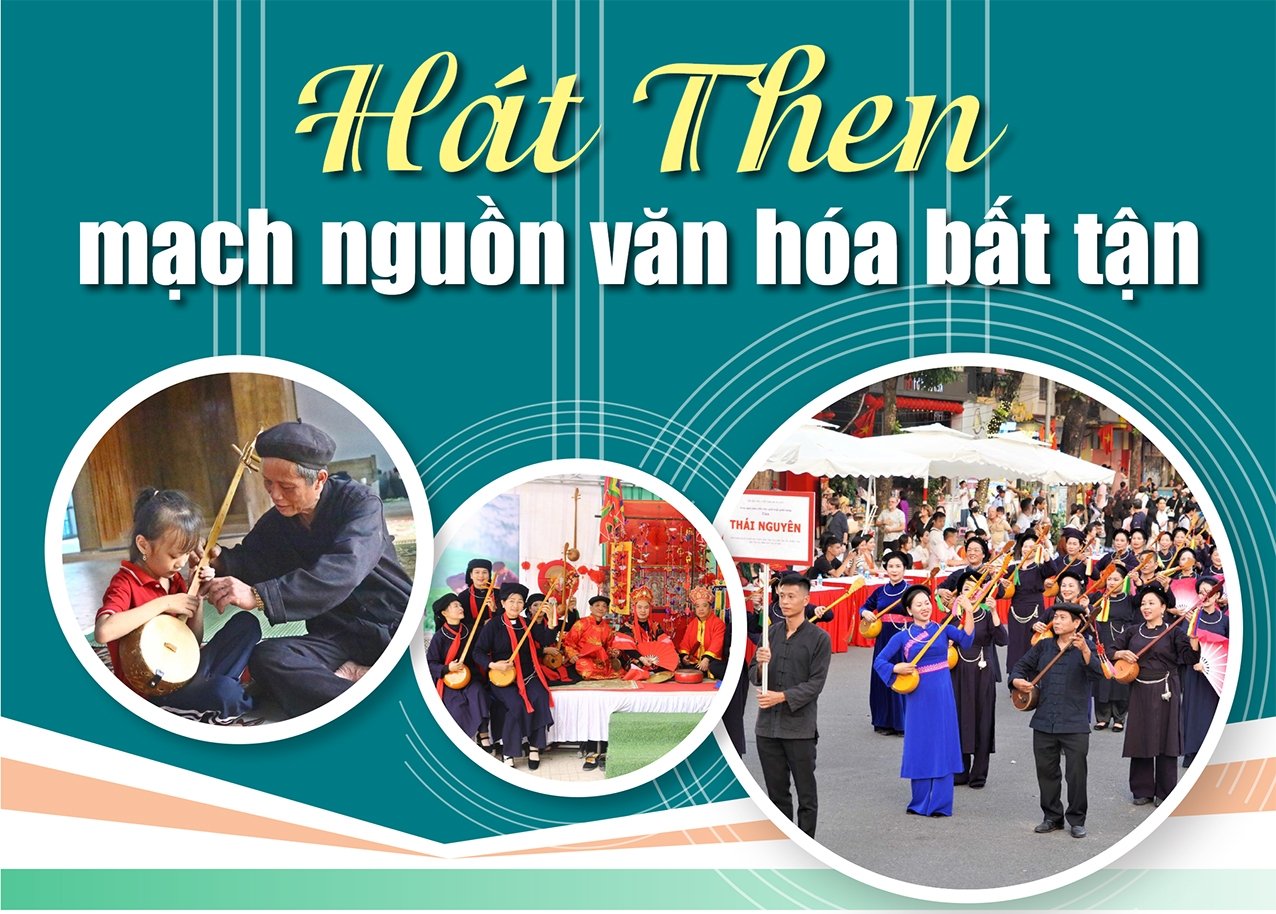 |
In 2019, "Then practice of the Tay, Nung, and Thai people in Vietnam" was recognized by UNESCO as an Intangible Cultural Heritage of Humanity.
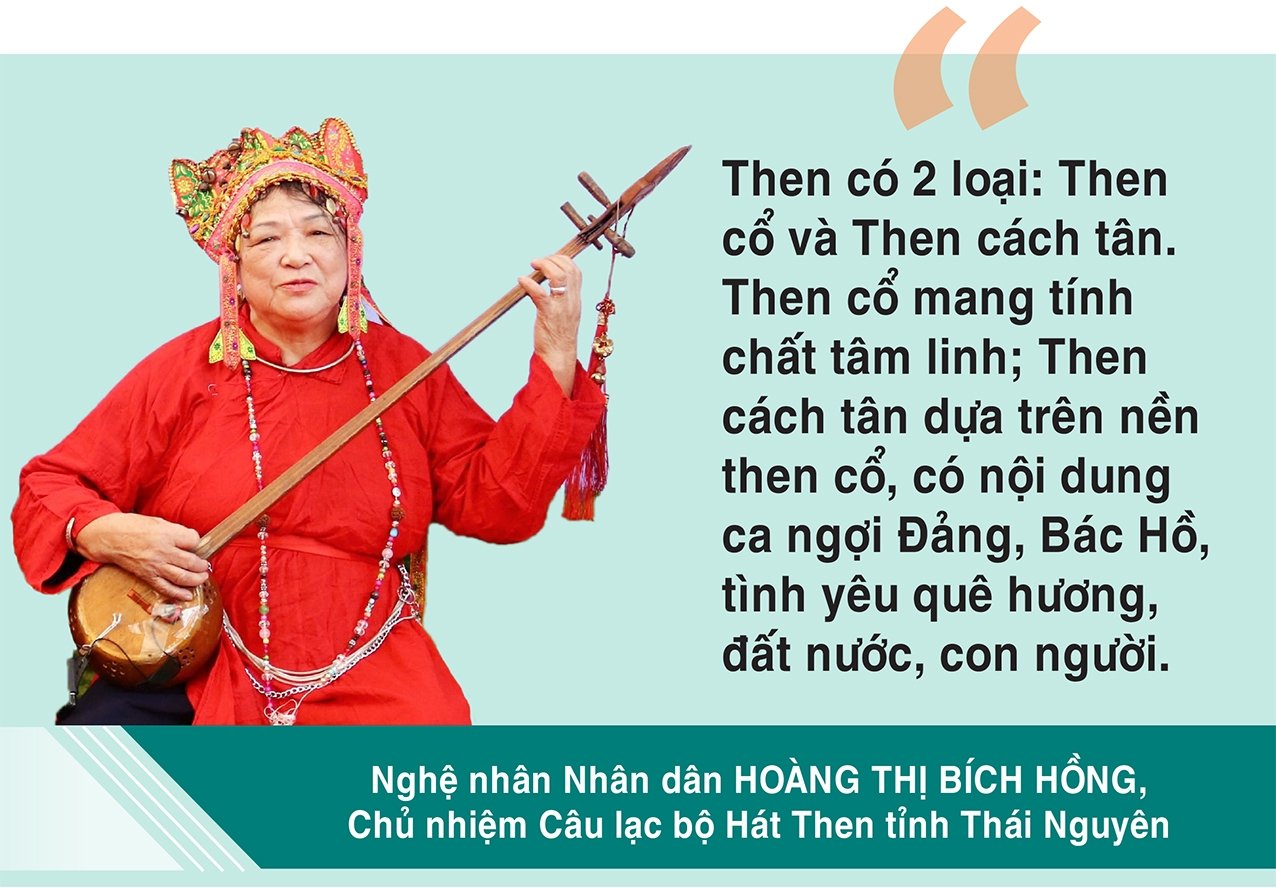 | ||
|
I have watched Lau Then of the Tay and Nung people in Thai Nguyen province many times, the same melody of the background singing flows endlessly on the magical sound of the Tinh instrument, but each time I have a different feeling. But the same state of fascination, like being lost between heaven and earth.
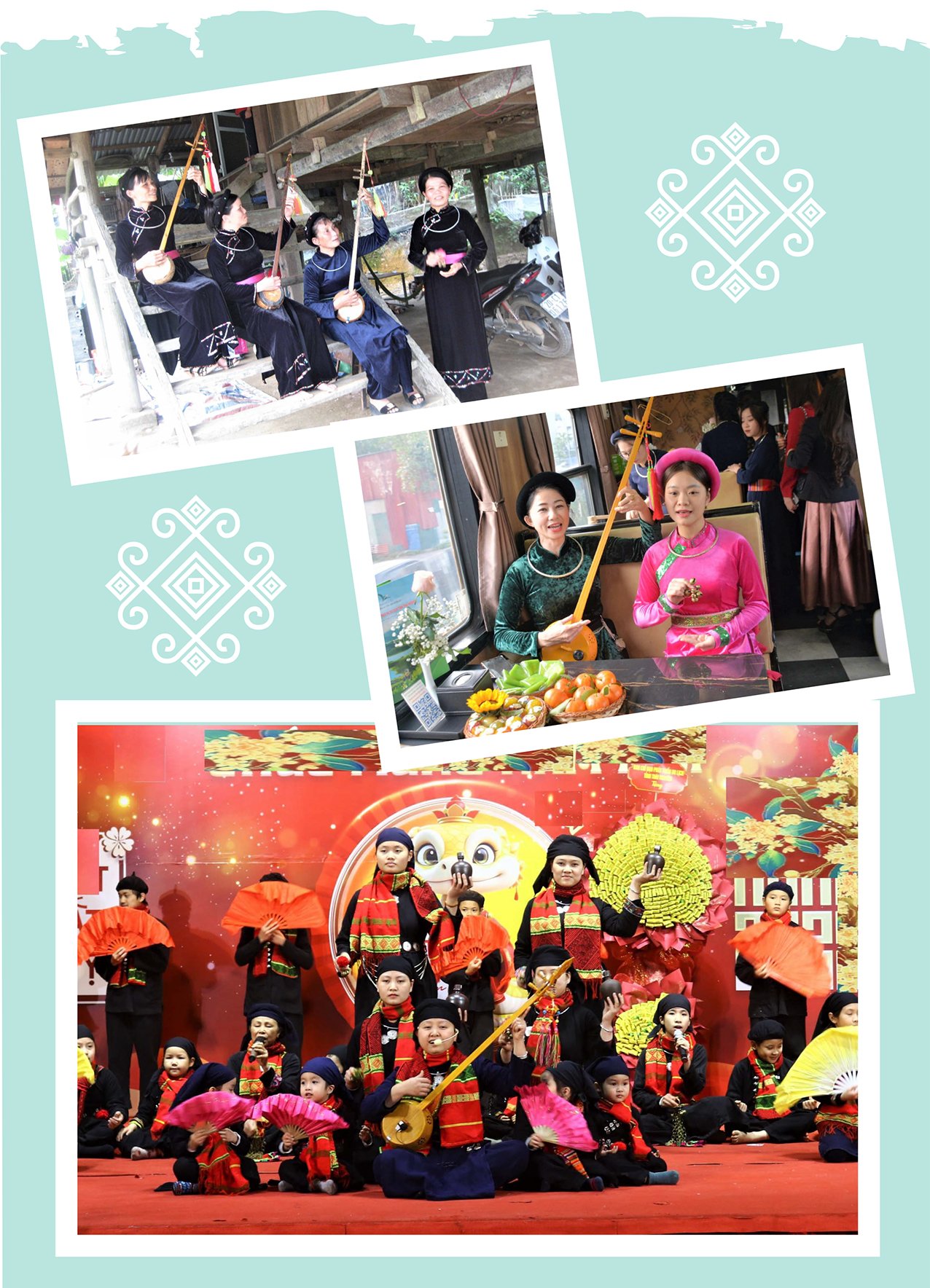 |
The Then Hotpot Party was started with all the innocence of the host and guests. And that spiritual feast had a strange intoxication, each drop of music and song in the ear, permeating and lingering, as if "leading" everyone present to Then village.
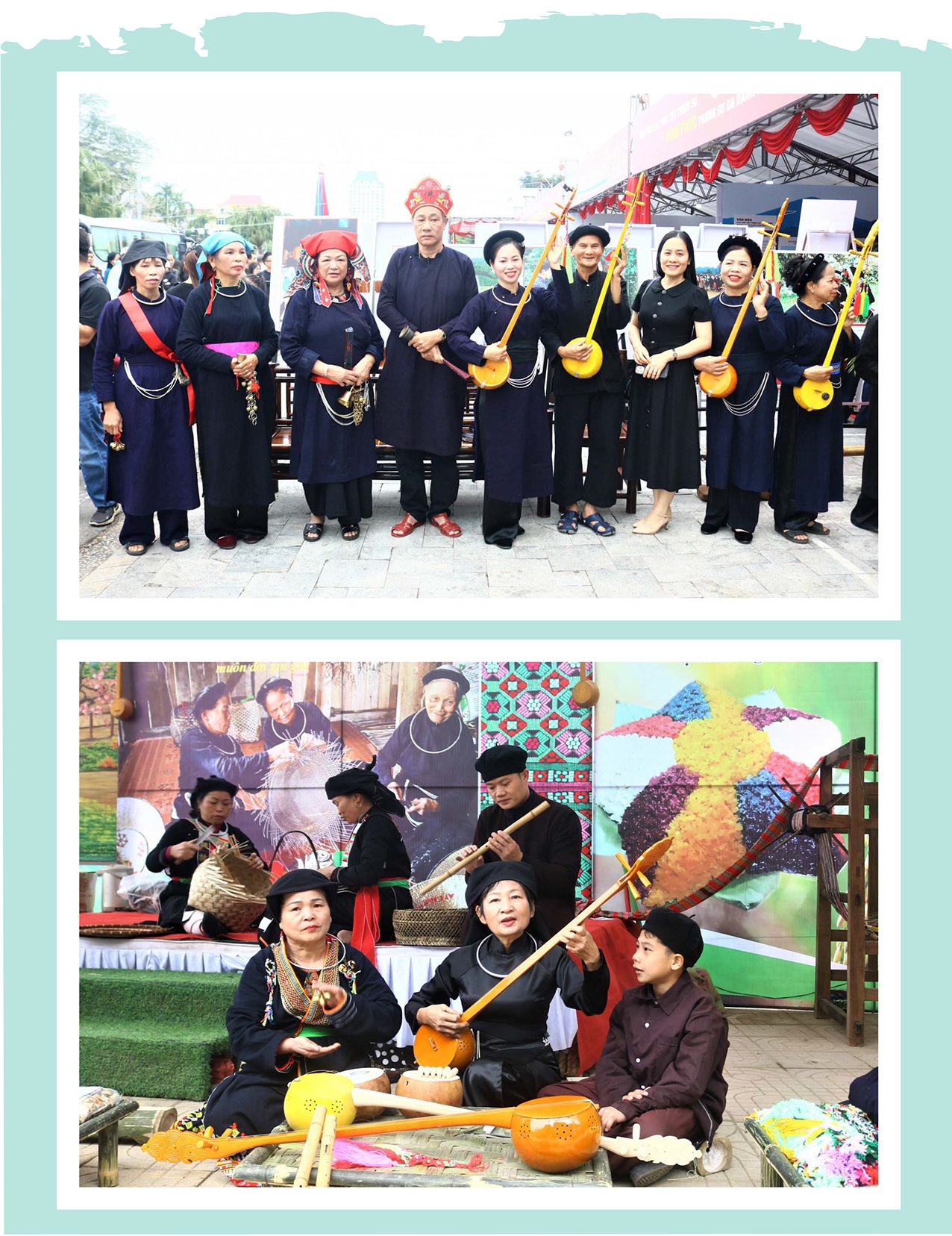 |
Then singing is a unique folk art form, combining lyrics, dance, music and is often performed in religious ceremonies and traditional festivals of the Tay and Nung people.
Then means "heaven", representing the connection between humans and the spiritual world and gods. The Tinh instrument, with its clear, smooth sound, is an indispensable instrument in every Then singing session.
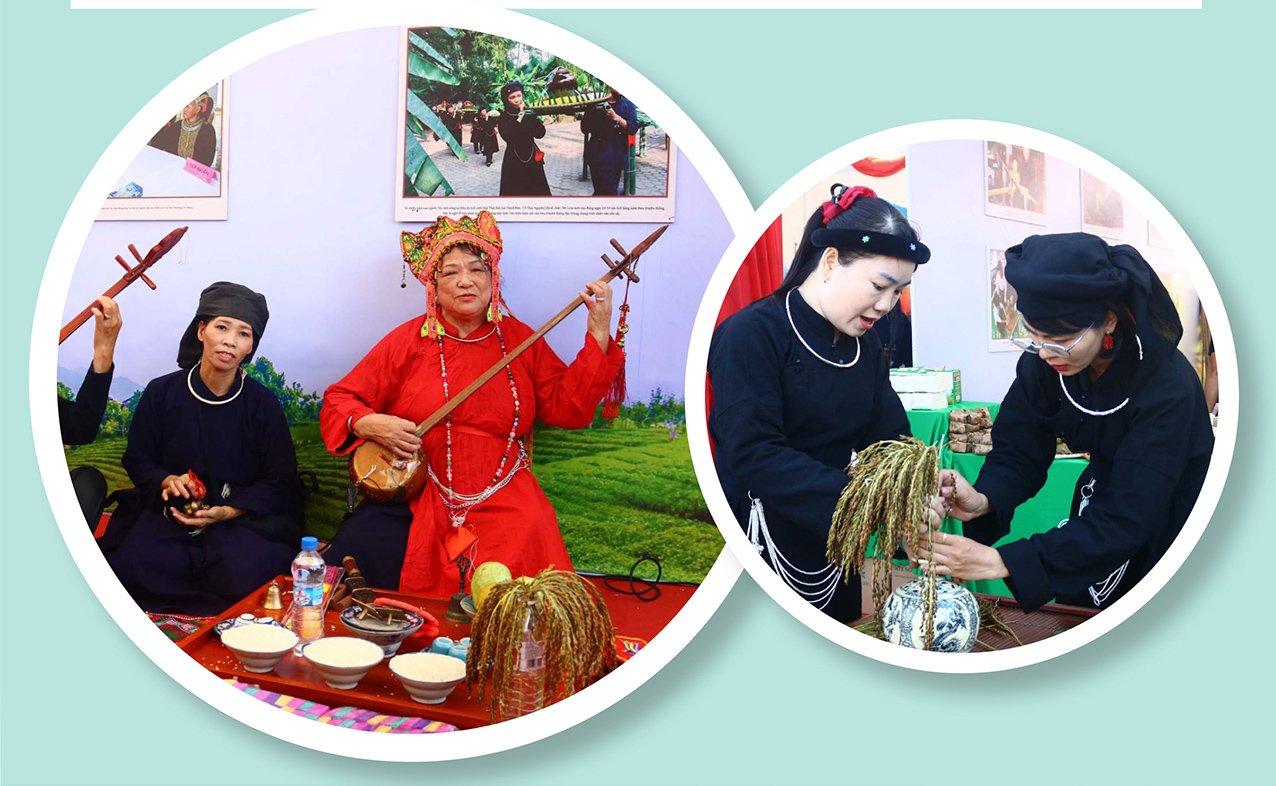 |
Then singing is often performed during major ceremonies such as praying for crops, praying for peace, coming-of-age ceremonies, or during community activities. Each Then word and each dance has a profound meaning, expressing the desire for a prosperous, happy life, a bountiful harvest, and a peaceful family. Then singers are not only artists but also "Then masters" - the ones who connect the earthly world and the spiritual world.
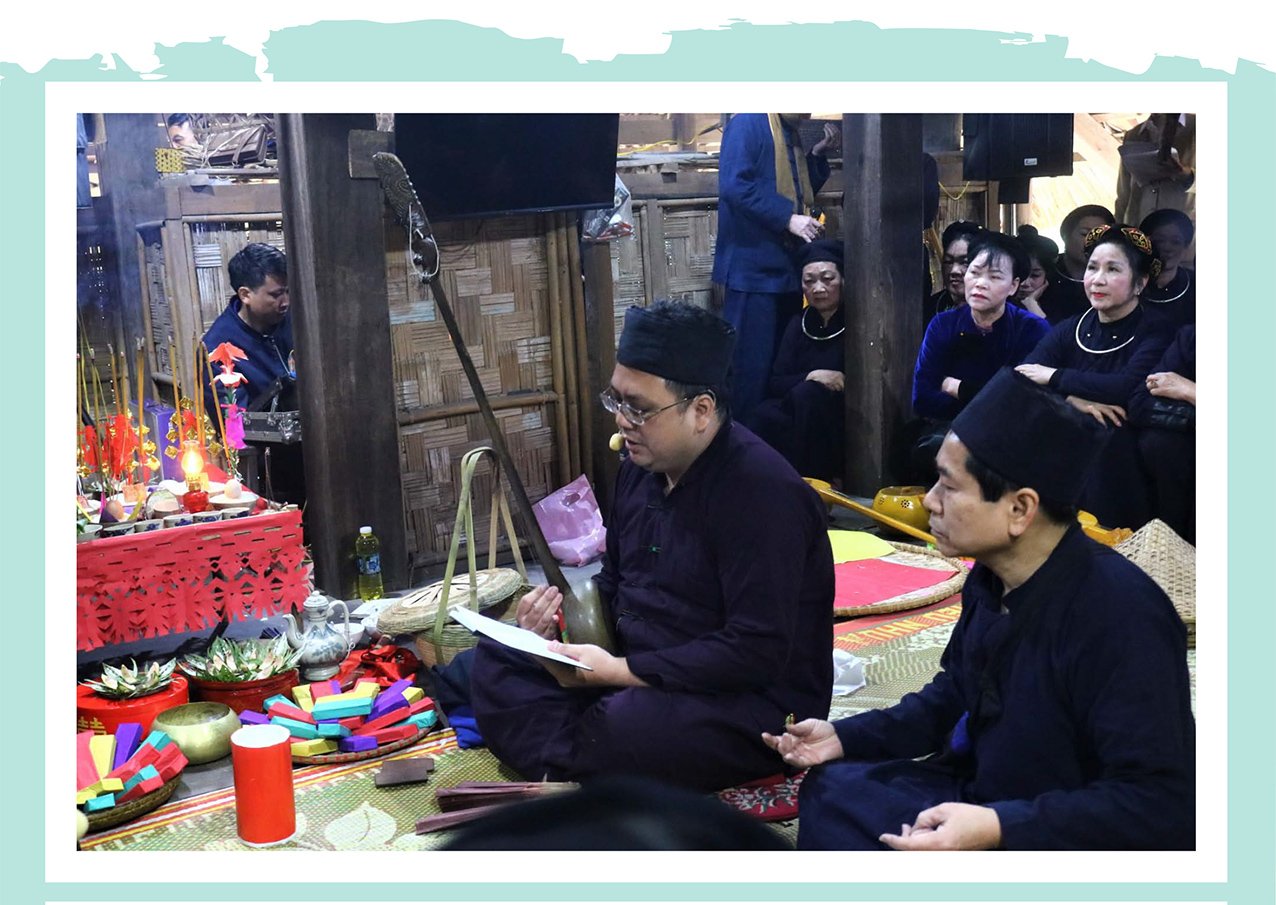 |
If Then singing is the voice of heaven and earth, then the Tinh lute is the indispensable soul in every Then singing session. The Tinh lute is a unique national musical instrument, with a simple structure but a very special sound. The Tinh lute is not only an instrument to accompany Then singing but also a tool for the artist to express his talent and emotions. Because the material for Then is the crystallization of the unique characteristics and quintessence of the unique traditional cultural beauty. For example, in Lau Then there is a suite: "Khun tang pay cau an" (Going to the sky to pray for peace for the family and the village).
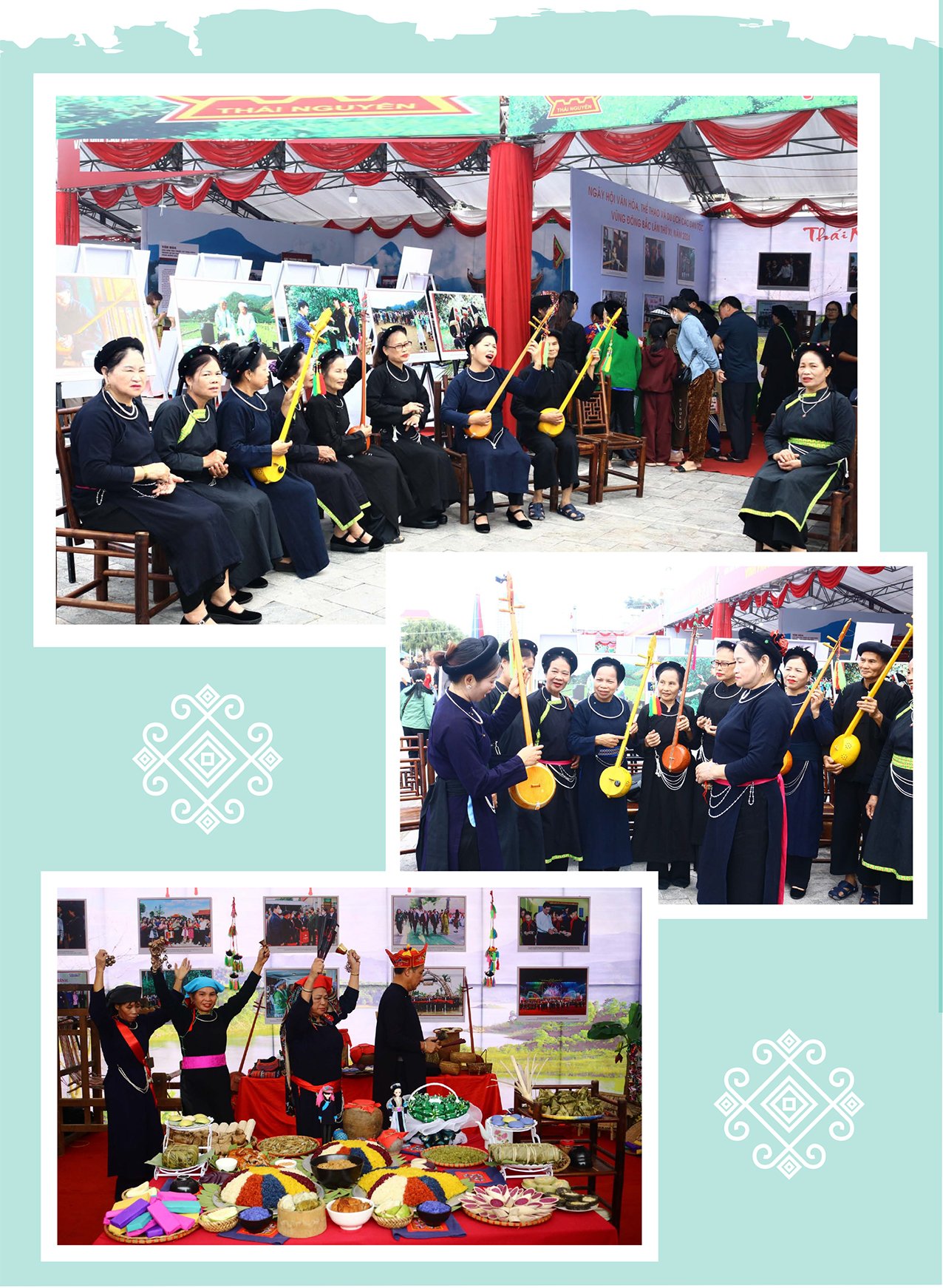 |
“Khun tang pay cau an” is an ancient Then poem, consisting of 10 chapters: “Pao phap pao slay” (Reporting to Buddha, gods, and saints to perform the ceremony); “Thai ve” (Cleansing the altar for the ceremony); “Kham le” (Dance to check the offerings before departure); “Pay tang” (Then army departing); “Kham hai” (Crossing the Milky Way); “Khau tu va” (Entering the king’s gate); “Nop le” (Submitting offerings); “Ky slu long dang” (Proclaiming blessings); “Tan dan, tan le” (Dance to the altar, celebrate) and “Hoi binh, khao ma” (Regarding the soldiers).
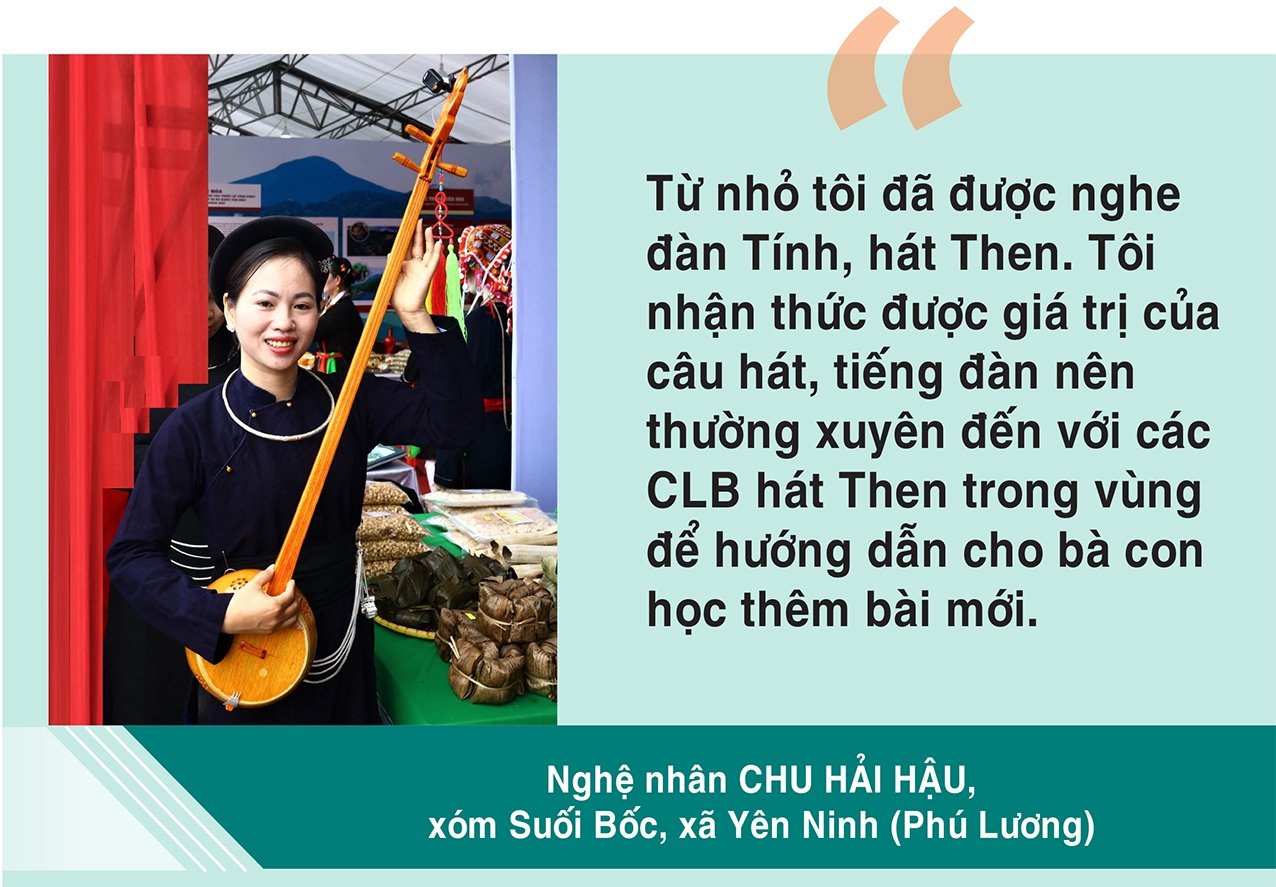 |
From everyday life, Lau Then has been artistically transformed into a stage performance, and in recent years, Thai Nguyen Then artists have brought Lau Then to participate in national and regional festivals. Because it contains cultural quintessence and has a unique, mysterious feel, participating artists have always brought home Gold, Silver, and Bronze medals.
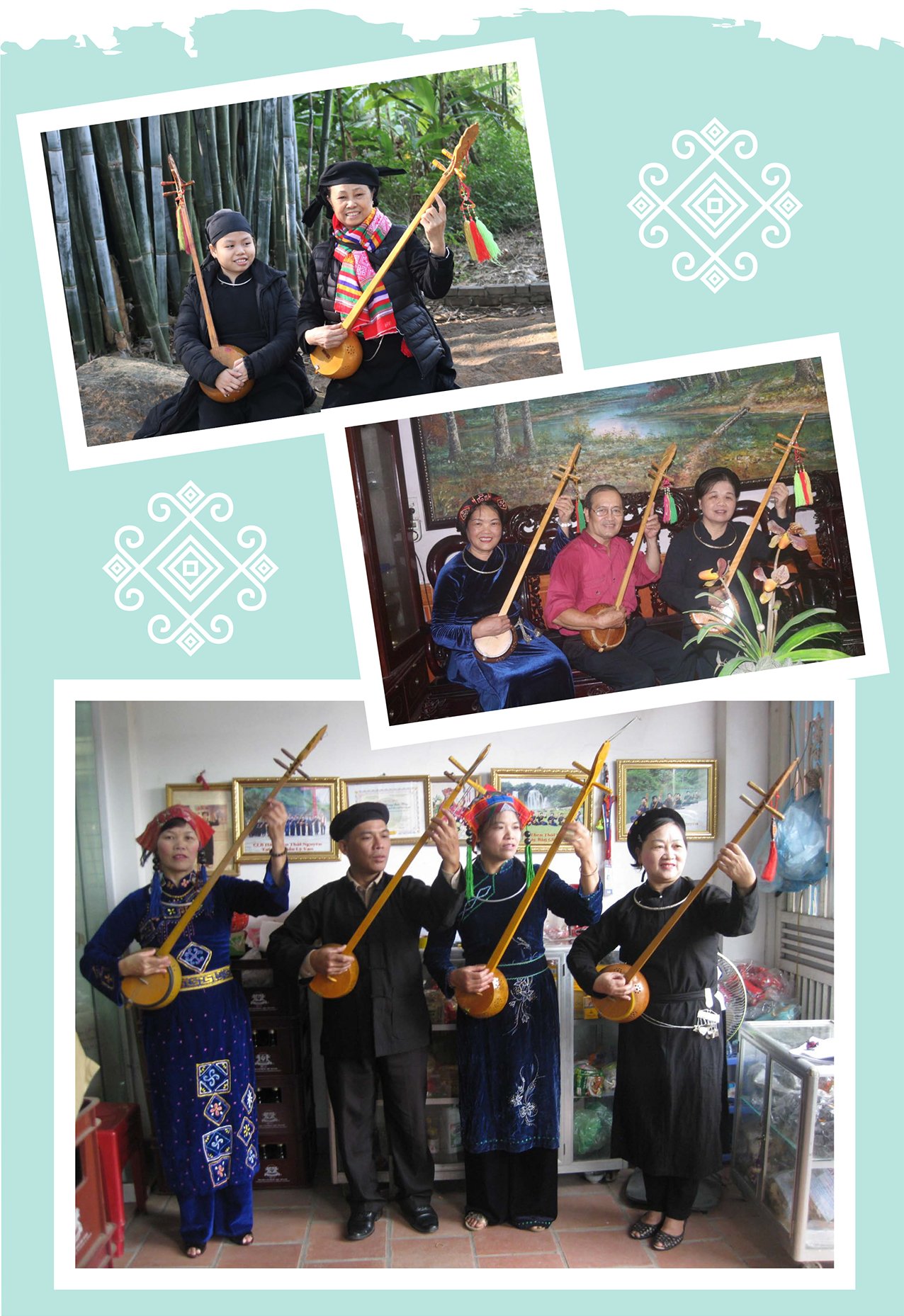 |
Then singing artist Hoang Thi Doi (in Phuong Tien commune, Dinh Hoa) said: Then lyrics also have a way and a rule. If you don't know it, it seems strange, if you like it, you will be curious and want to learn. When your fingers know how to press and release the keys, and your mouth knows how to hum the lyrics, you will be fascinated. No matter how busy you are, you will still spend some time every day playing and singing, just like people need food to eat and clothes to wear.
Then singing artist Hoang Van Khanh (in Dan Tien commune, Vo Nhai) shared: Since I was in the cradle, my parents lulled me to sleep with Then songs. Then lyrics and Tinh language are the special food that nourishes my soul as I grow up. However, it was only later that I realized the quintessence and simplicity, the sincerity and sublimity of Then lyrics and the elegant tone of the Tinh instrument. Therefore, I am more devoted to the instrument and the songs, with the wish to join the artists in preserving and promoting a unique traditional cultural beauty of my people.
 |
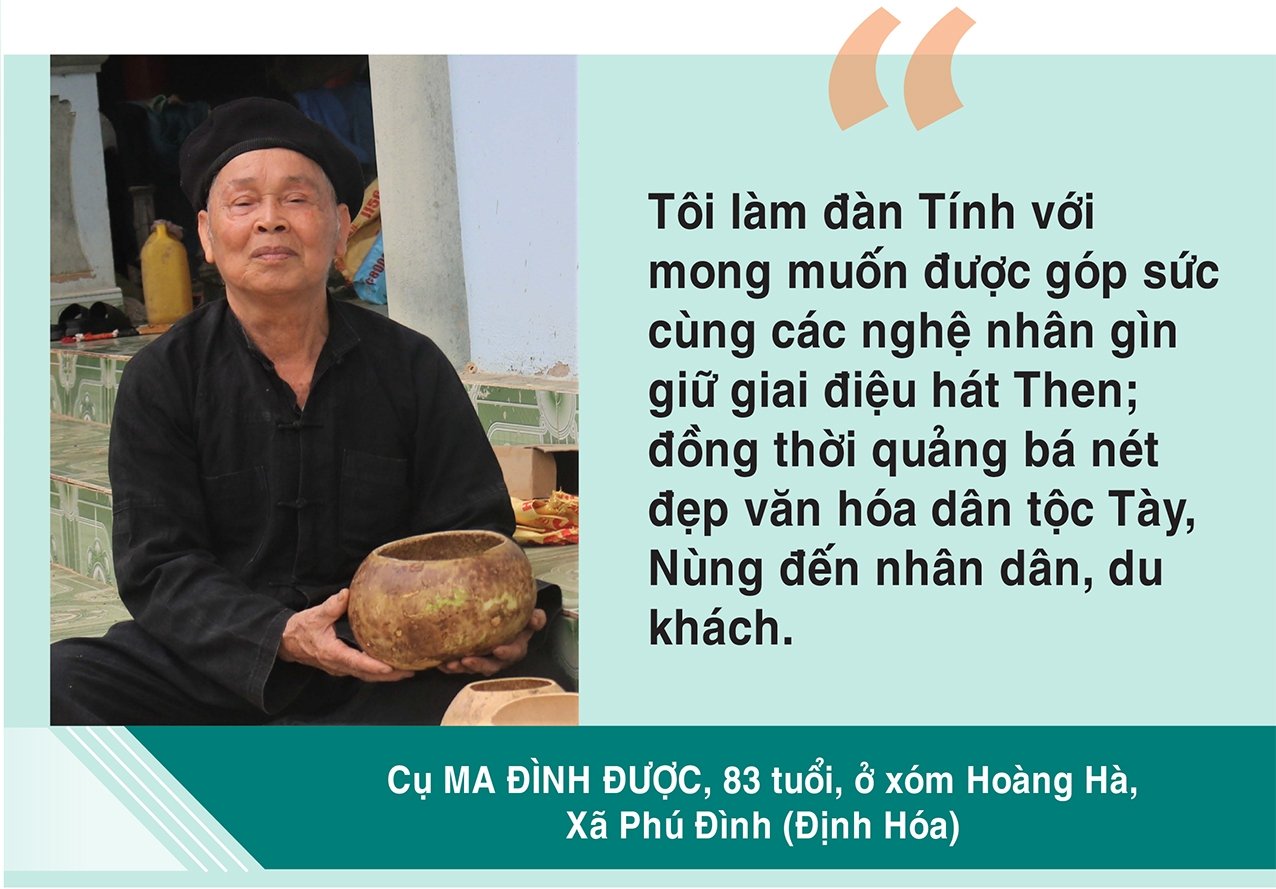 |
Then singing and Tinh lute are not only an art form but also an indispensable part of the spiritual life of Thai Nguyen people. For the Tay and Nung people, Then is the voice of the heart, a prayer, a gratitude to ancestors and gods. The smooth, profound Then melodies have entered the subconscious, becoming a source of encouragement and comfort in daily life.
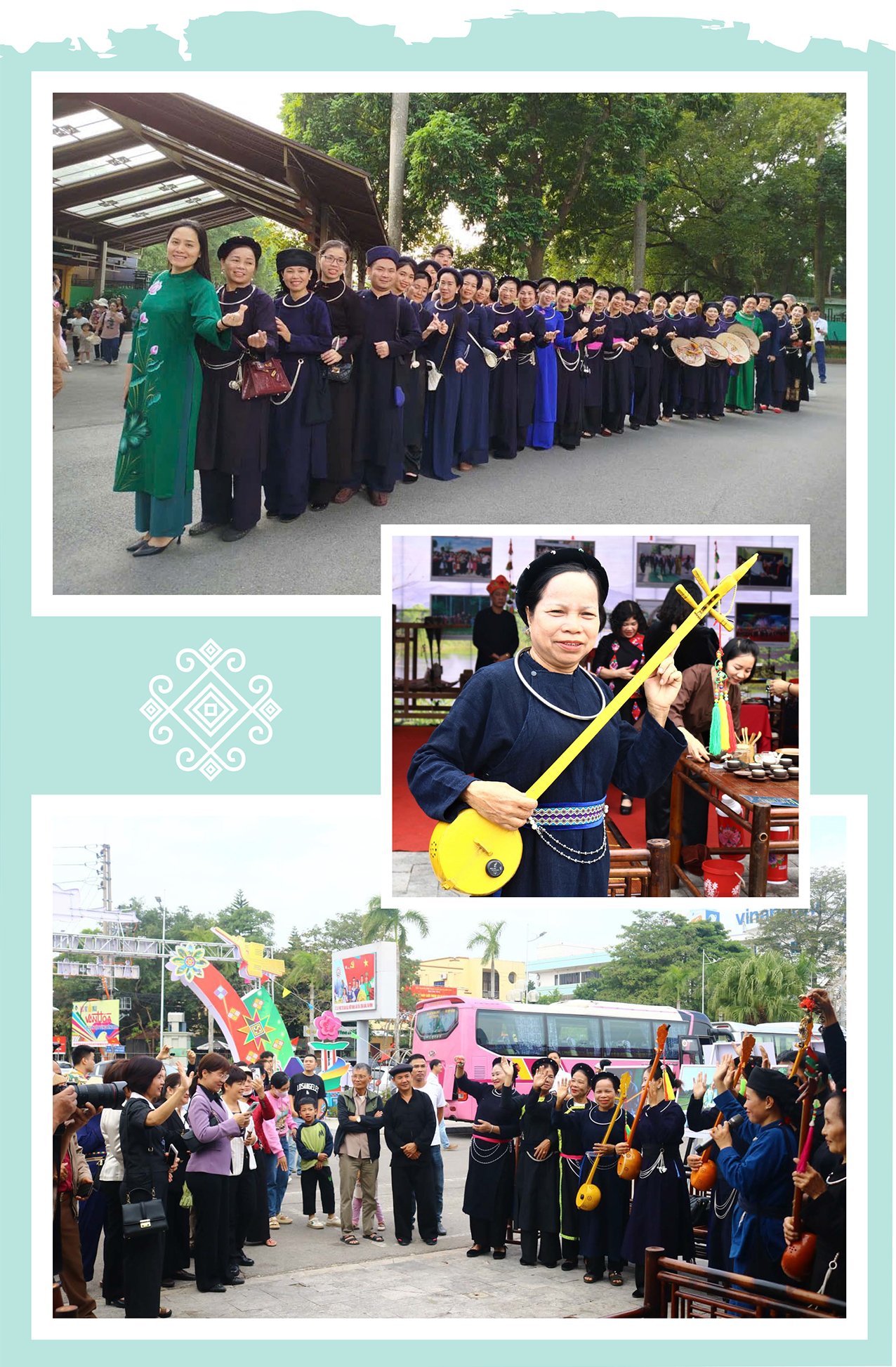 |
But for a long time, up to several decades, the Then and Tinh languages of the ethnic groups were forgotten. Even children going to school were afraid to speak their own ethnic language. At home, grandparents, parents, and children learned to speak the common language together. A beautiful cultural feature representing the Tay and Nung ethnic groups of Viet Bac was gradually lost. Especially in the context of integration with other countries in the world, indigenous culture was mixed, and the children of ethnic groups, including the Tay and Nung, followed the taste for foreign music.
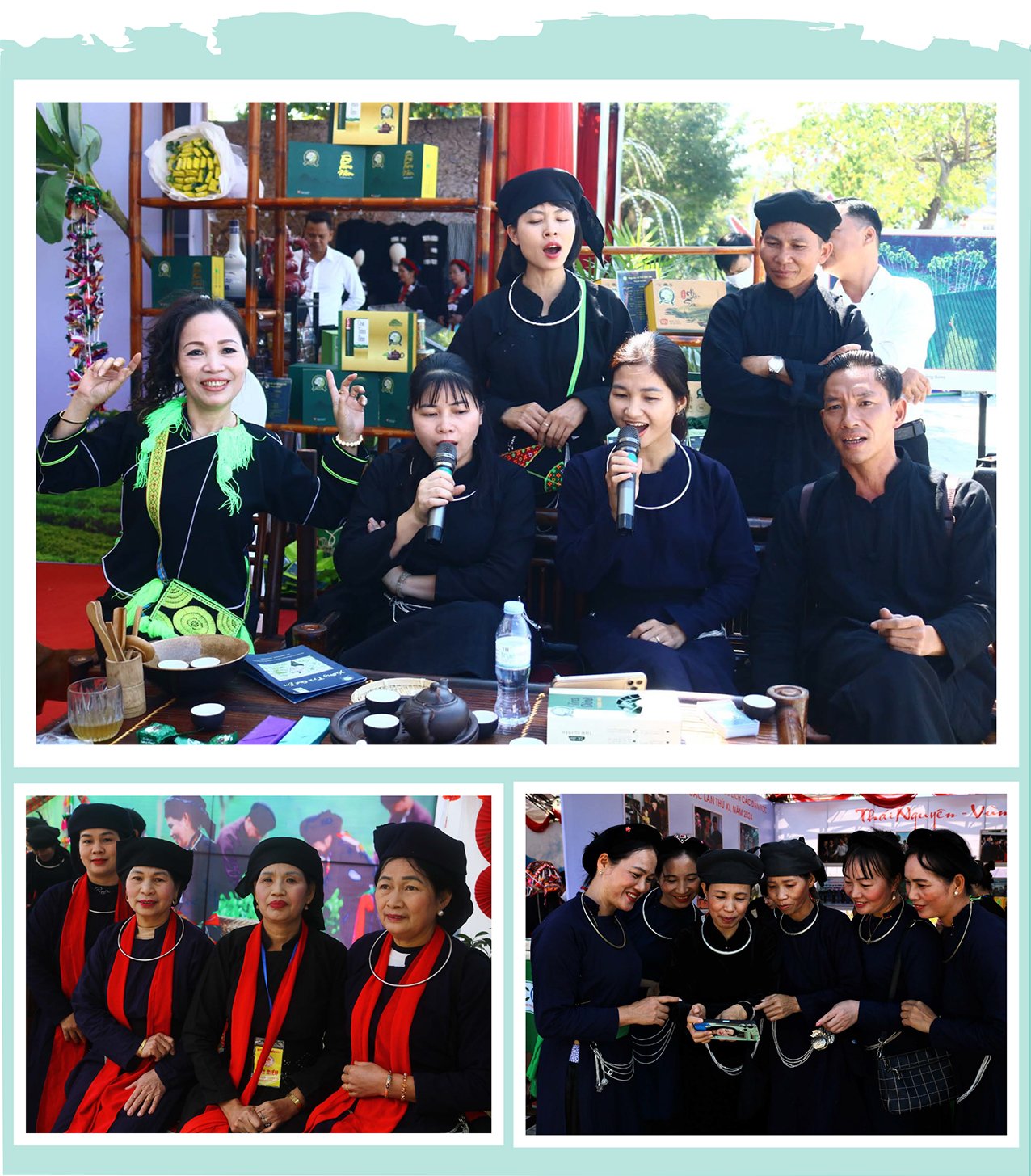 |
Changing lifestyles and the penetration of modern culture have made the younger generation less interested in traditional values. Many elderly Then artists bring ancient Then songs and the lyrics of the Tinh instrument back to the world of the wise. This poses a great challenge in preserving and promoting the value of Then singing and Tinh instrument.
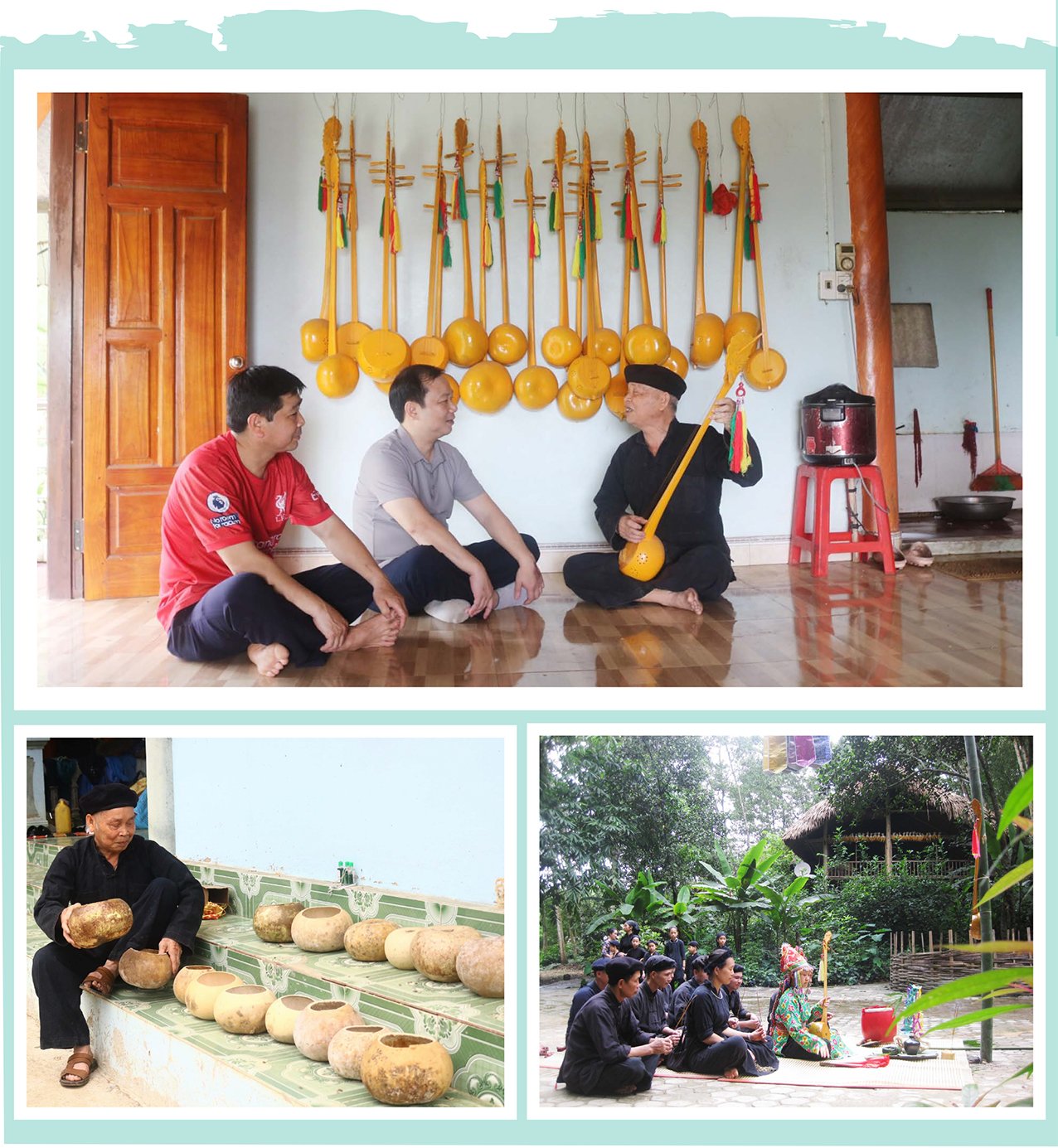 |
Recognizing the importance of preserving cultural heritage, in recent years, all levels and functional sectors of Thai Nguyen province have made great efforts to preserve and promote the value of Then singing and Tinh lute. Many classes teaching Then singing and Tinh lute have been opened in residential areas and schools, attracting the participation of a large number of people, especially the young generation.
Festivals and competitions for Then singing and Tinh playing are also held regularly, creating a playground for Then artists to express their feelings, while also demonstrating their talents and inspiring Then to the community.
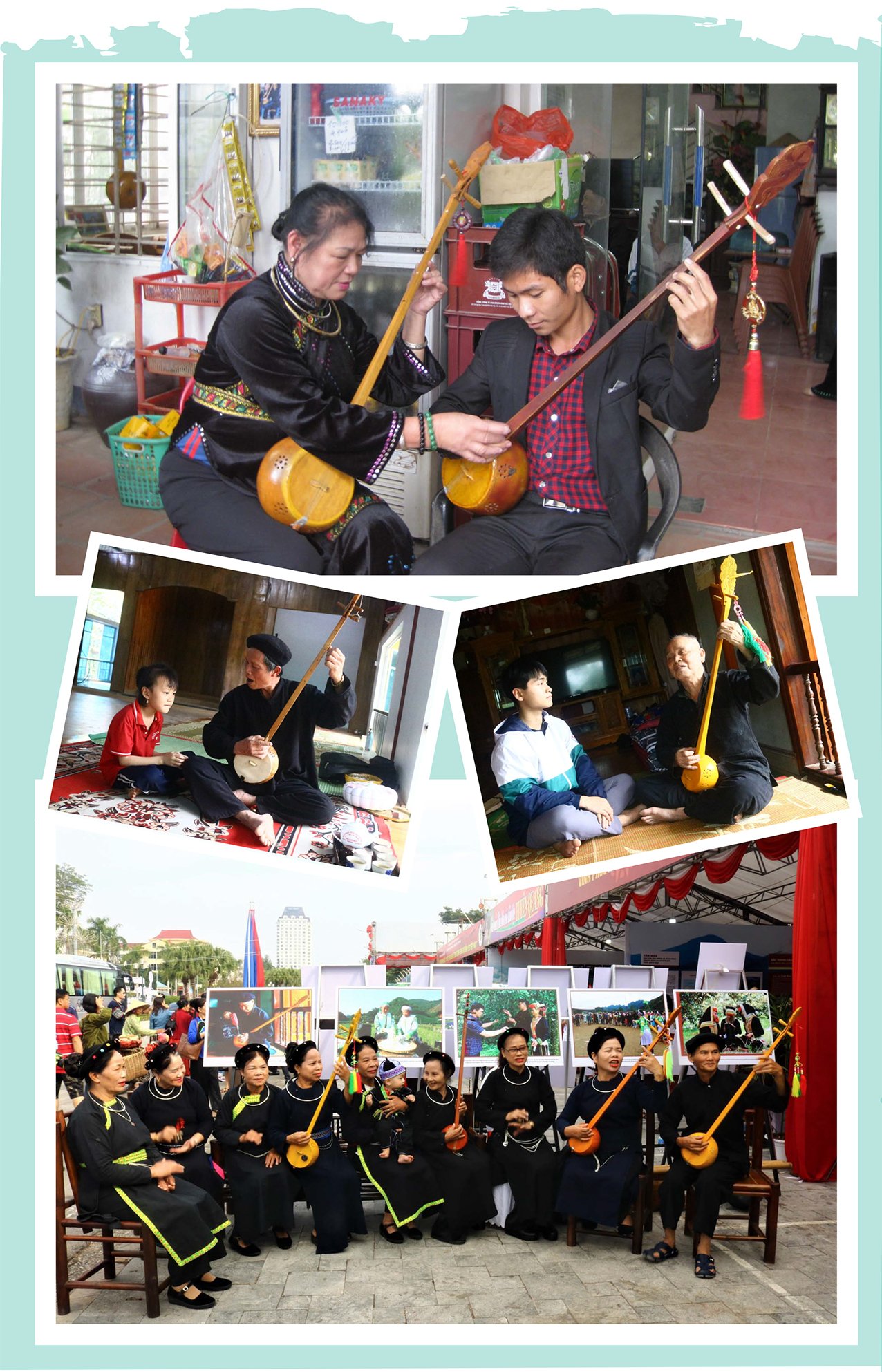 |
The story of Then singing in Thai Nguyen province must mention artist Tran Yen Binh, group 1A, Tan Lap ward (Thai Nguyen city). Mr. Binh is the one who put a lot of effort into restarting the Then singing and Tinh lute movement in Thai Nguyen province.
The story began 20 years ago, when Mr. Tran Yen Binh was working at the Provincial Cultural Center (now the Provincial Cultural and Artistic Center). He said: I followed the instructions of comrade Mong Dong Vu, Director of the Provincial Cultural Center, to collect and gather Then singing artists. When there were enough "more than 10 people", then we established a provincial Then singing club.
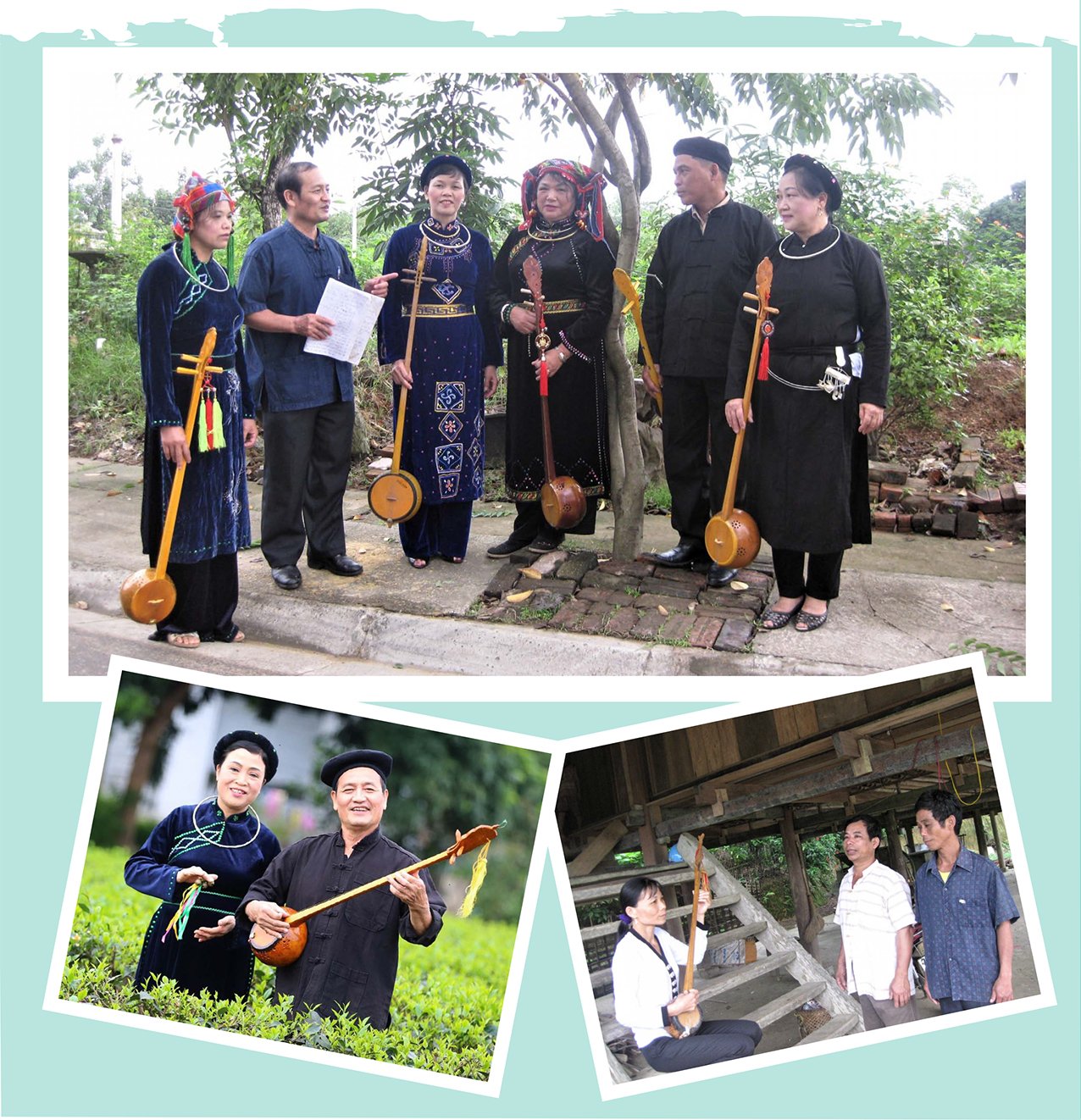 |
To complete his assigned “mission”, Mr. Binh went to the homes of Then singers to persuade them to join the club. Whenever he heard of someone who knew how to sing Then, he went to their homes to “beg” them to join. Seeing his enthusiasm, some elderly people who knew how to sing Then and play the Tinh instrument registered to join, and at the same time encouraged their children and grandchildren to join the activities to learn Then singing and play the Tinh instrument.
In 2007, the club was established with 18 participants, but less than 10 people knew how to sing Then and play Tinh.
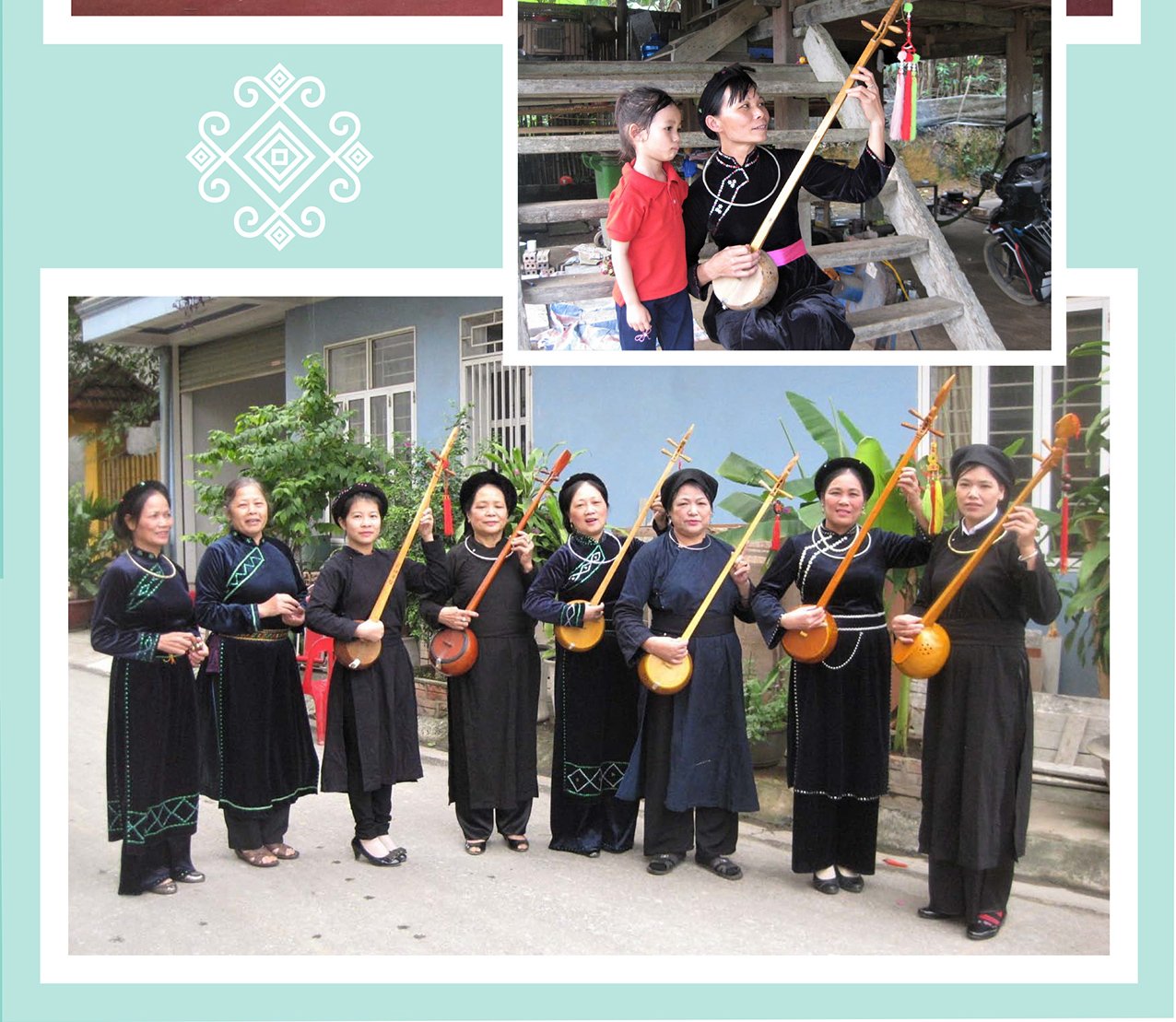 |
Difficulties are inevitable, even for People's Artist Hoang Thi Bich Hong, Head of the Then Singing Club of Thai Nguyen Province. At that time, she was a newly retired staff member of the Viet Bac Folk Song and Dance Theater. She said: When I was encouraged, I did not join right away, because I thought that the club was founded to perform and earn money like the old theater troupes. Later, I understood that joining the club was to sing Then together, play Tinh lute and pass it on to the younger generation. That was when I agreed to join the club.
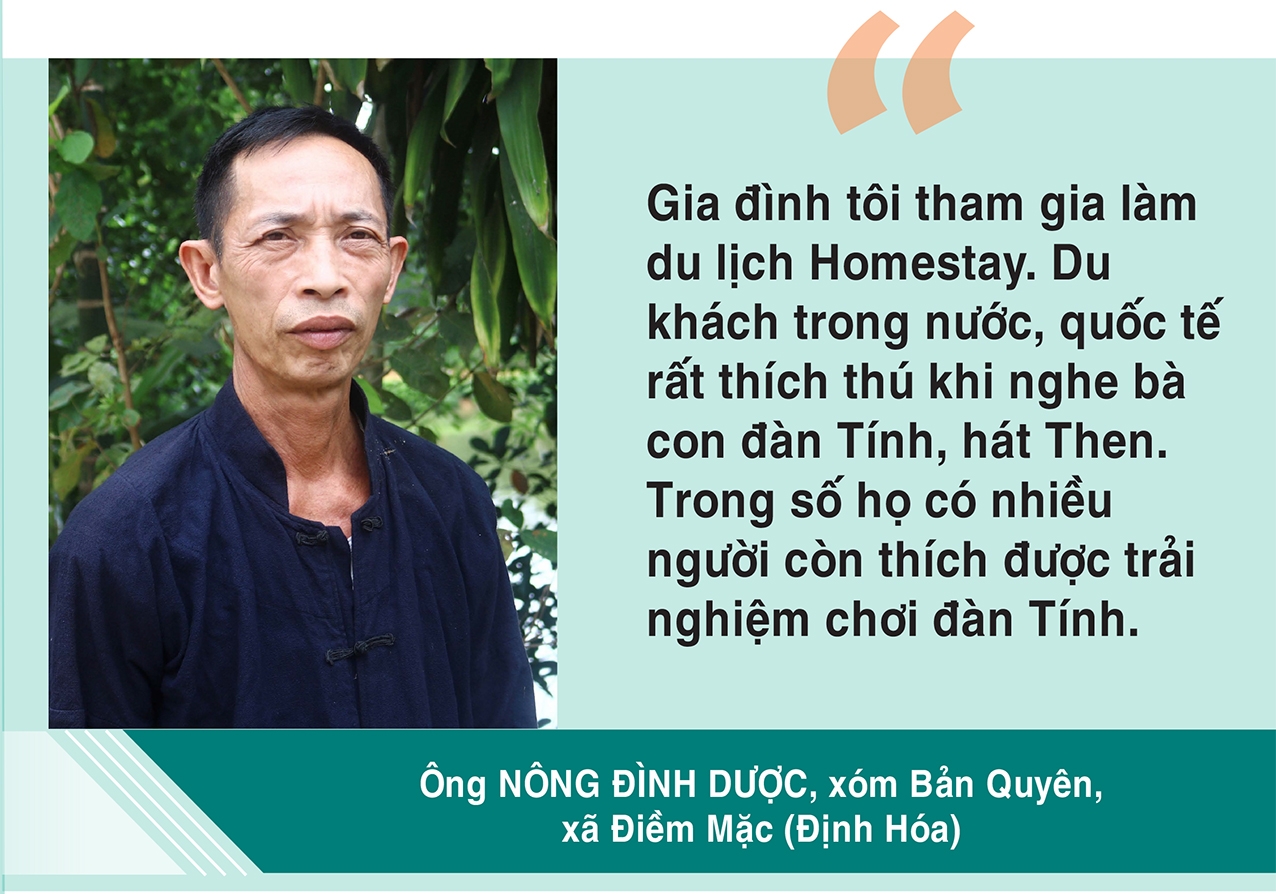 |
Since then, Then verses and Tinh lutes have been shared and supplemented by club members. Accordingly, ancient and modernized Then verses have been performed in a systematic, complete, and correct manner, and passed on to club members.
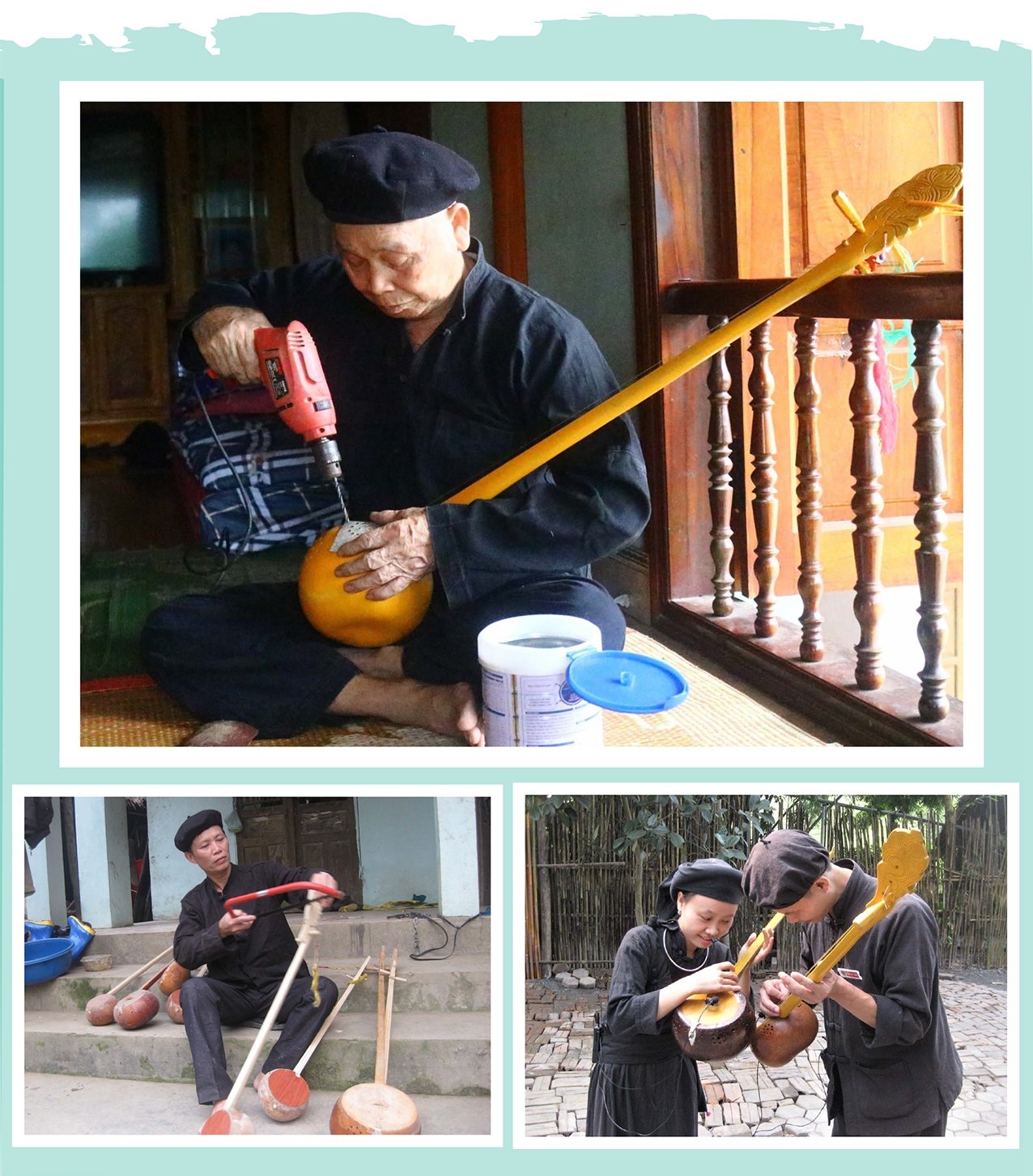 |
Many people joined the club but had never held a Tinh instrument and sung Then before, but after only one year of persistent practice, they knew many songs by heart, could play, sing, and compose new Then songs. They then spread Then verses and Tinh songs to the people in the area. To date, the provincial Then Singing Club has grown to more than 50 members.
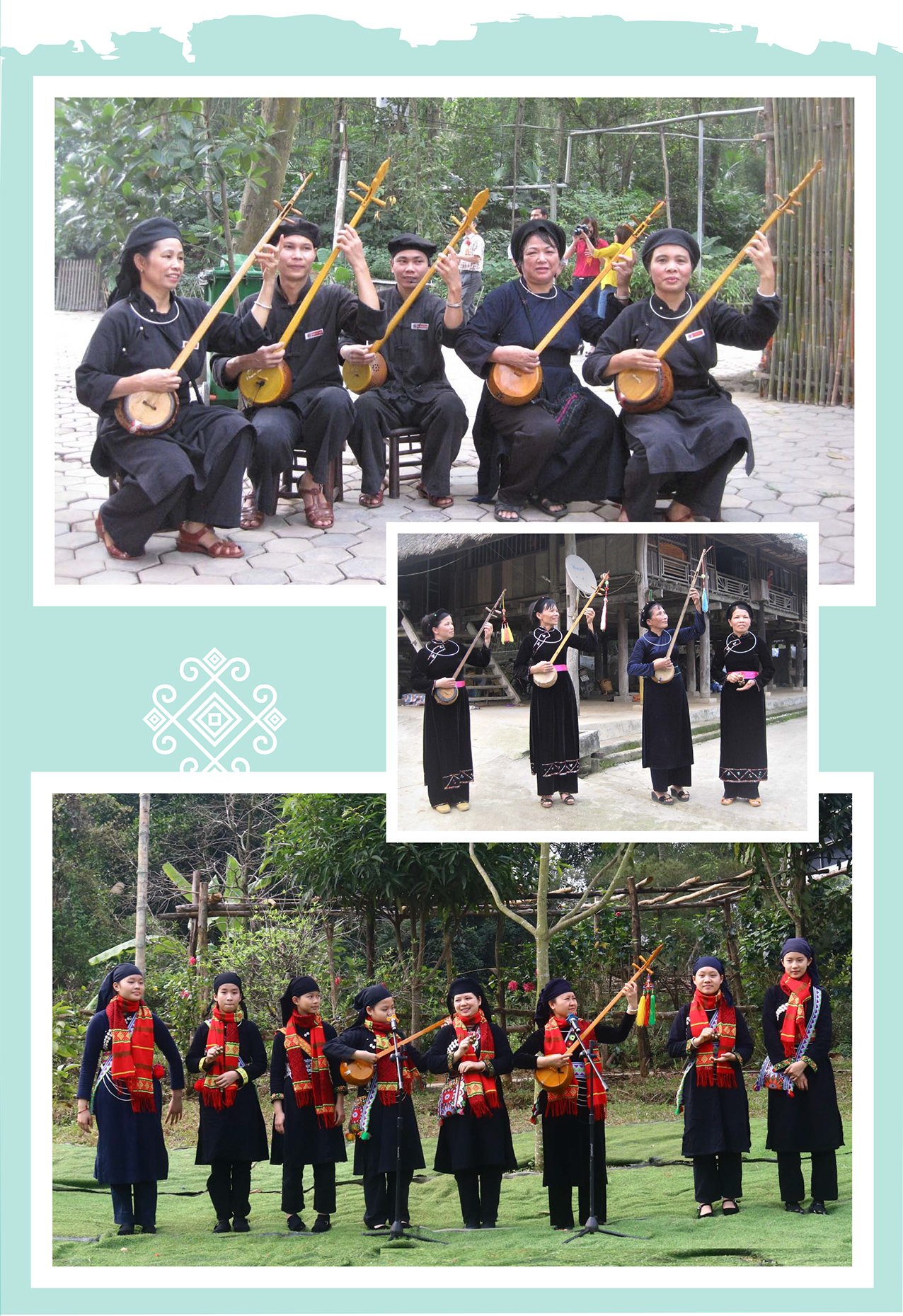 |
The good news is that the club members have spread their passion for Then widely in the community. Accordingly, the number of people who know how to sing Then and play Tinh is increasing day by day, dozens of Then singing clubs in residential areas have been established, with about 500 members.
People self-guided and helped each other with the skills of using the Tinh instrument, pressing and releasing the notes while participating in the singing. The hands that were used to planting rice, picking tea, and chopping wood suddenly became soft with the Tinh instrument. Then the singing was warm like the morning sun, making people forget their fatigue and feel closer to each other.
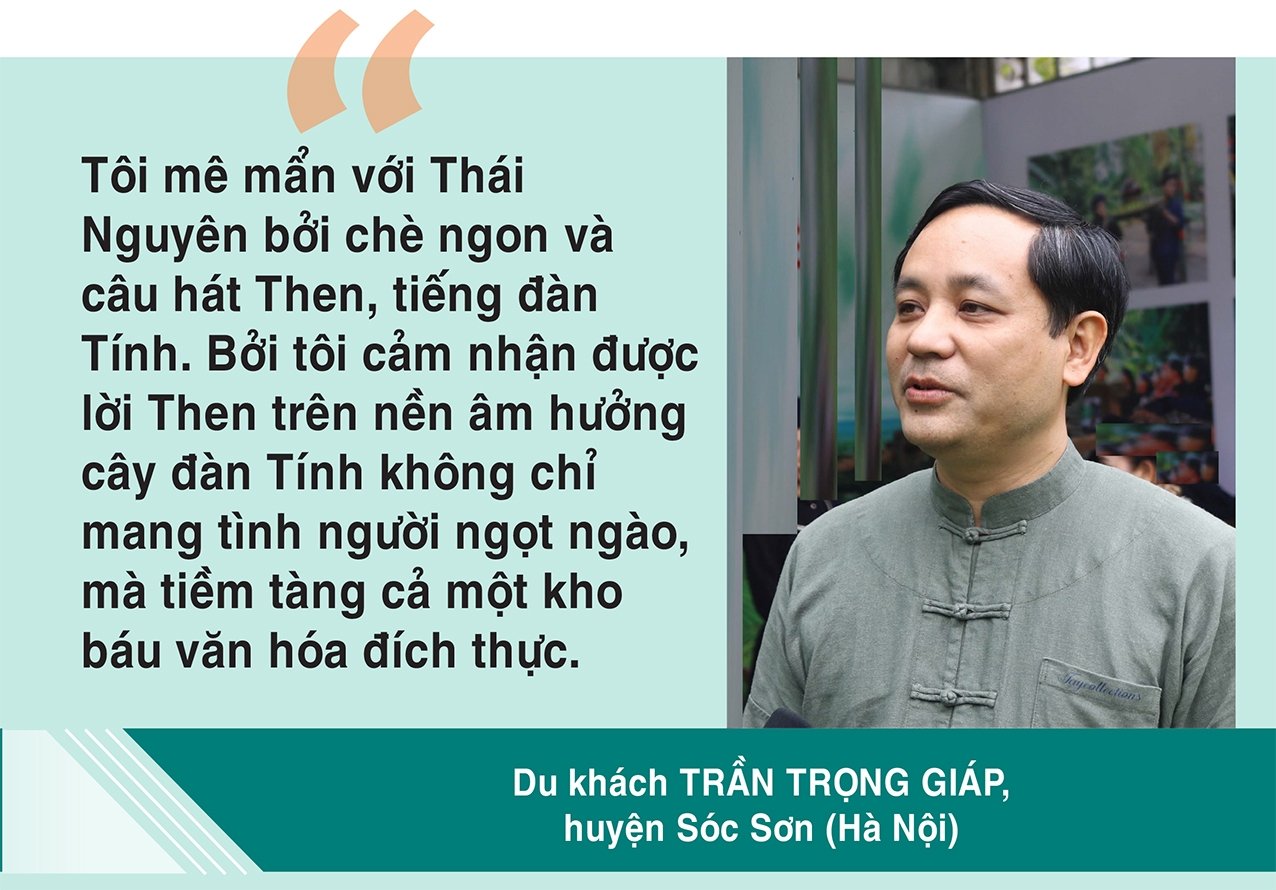 |
Nowadays, on the mass media, there are a variety of music genres from many different cultures around the world, some are noisy, some are gentle, but like a miracle existing in everyday life, Then lyrics and Tinh sounds naturally resonate with the sweet sounds of heaven and earth, of people's hearts. For a simple reason, Then singing and Tinh playing are not only art, but also the soul, the profound indigenous cultural beauty that carries the essence of the Tay and Nung ethnic groups in Viet Bac.
Each Then melody, each Tinh lute sound contains love, attachment to the homeland, to the origin, to the traditional cultural values that have been preserved and passed down for thousands of years and forever.
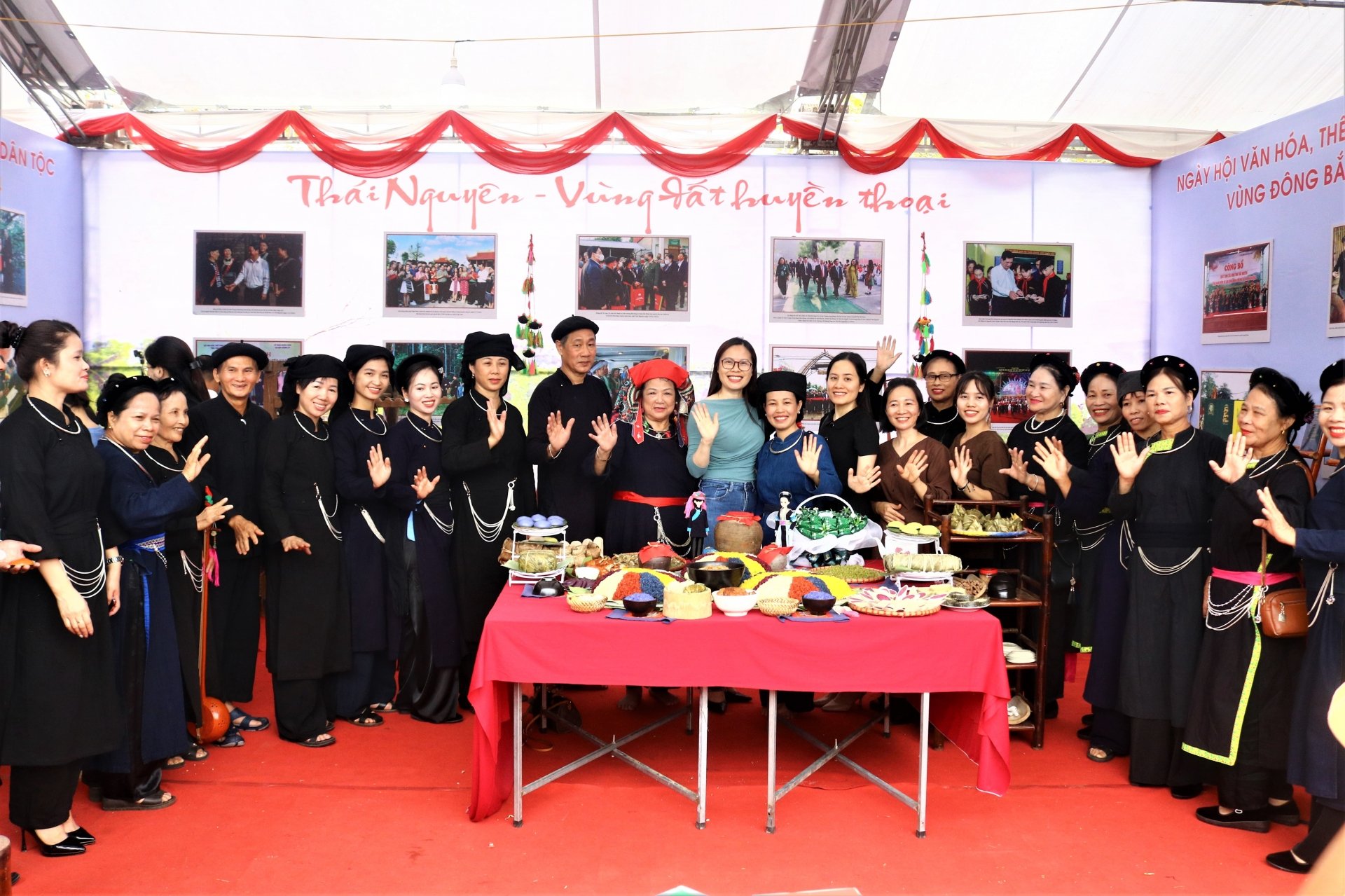 | ||
|
Source: https://baothainguyen.vn/multimedia/emagazine/202504/hat-then-mach-nguon-van-hoa-bat-tan-a41088a/




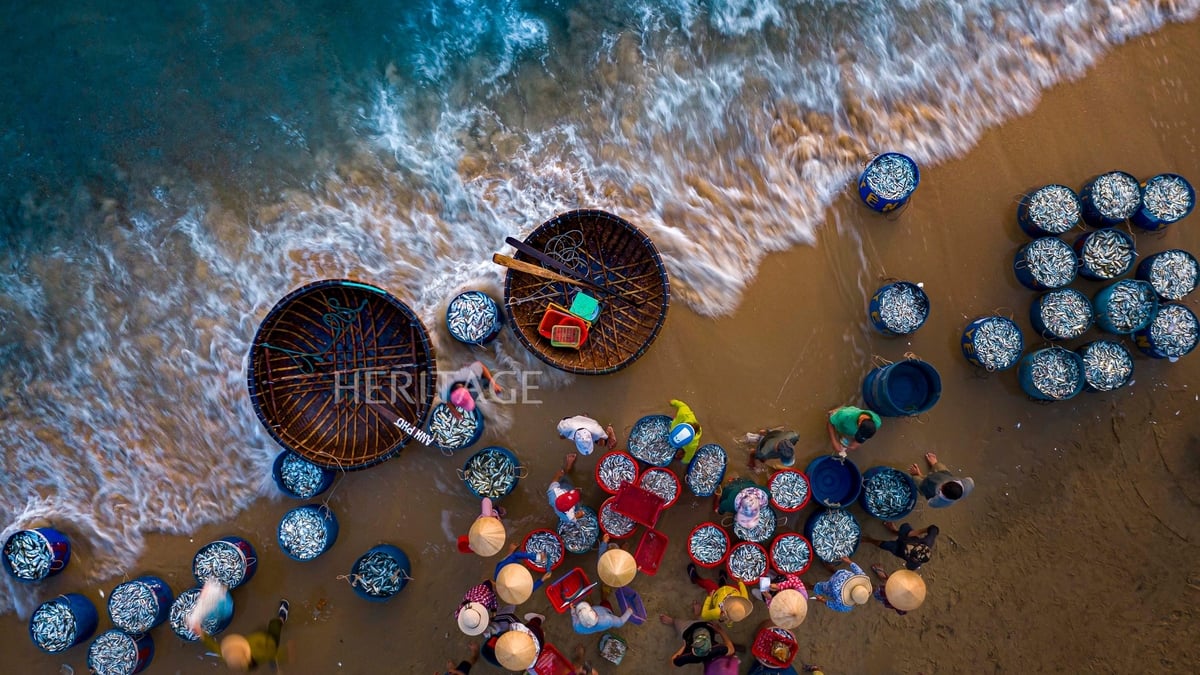

![[Photo] Prime Minister Pham Minh Chinh holds talks with Prime Minister of the Kingdom of Thailand Paetongtarn Shinawatra](https://vphoto.vietnam.vn/thumb/1200x675/vietnam/resource/IMAGE/2025/5/16/23b5dd1e595d429491a54e3c1548fb79)
![[Photo] The Prime Ministers of Vietnam and Thailand witnessed the signing ceremony of cooperation and exchange of documents.](https://vphoto.vietnam.vn/thumb/1200x675/vietnam/resource/IMAGE/2025/5/16/935407e225f640f9ac97b85d3359c1a5)

![[Photo] Welcoming ceremony for Prime Minister of the Kingdom of Thailand Paetongtarn Shinawatra on official visit to Vietnam](https://vphoto.vietnam.vn/thumb/1200x675/vietnam/resource/IMAGE/2025/5/16/cdd9e93739c54bb2858d76c3b203b437)


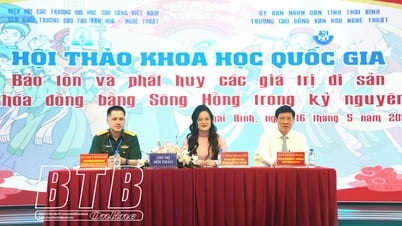

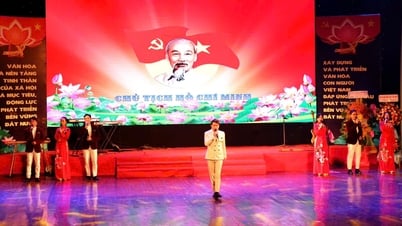


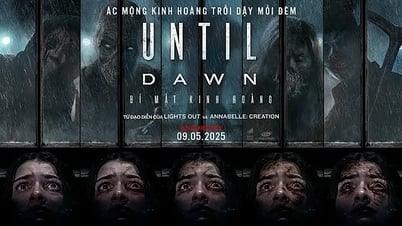
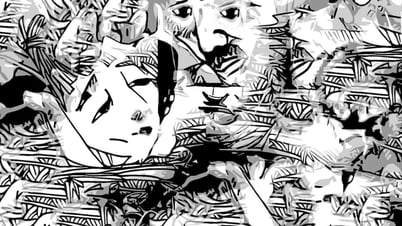




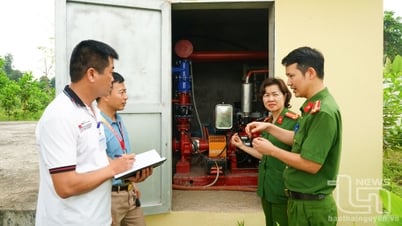
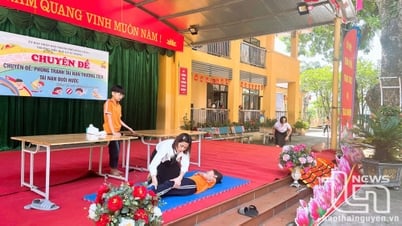
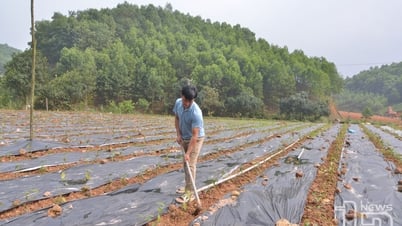
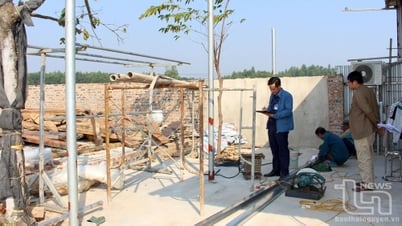











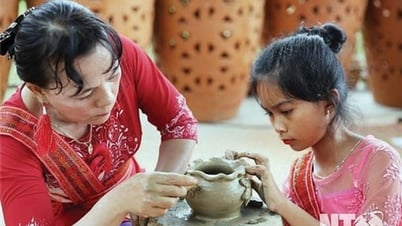

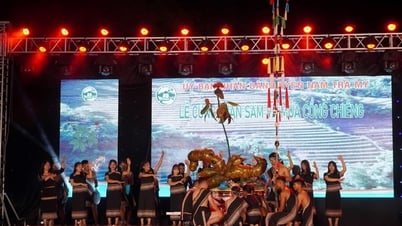







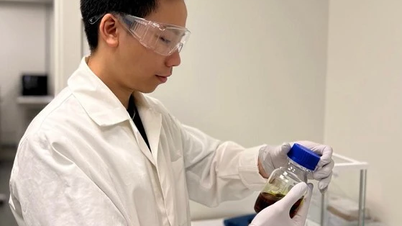



















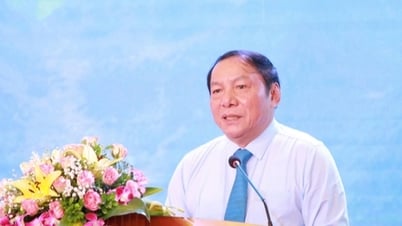



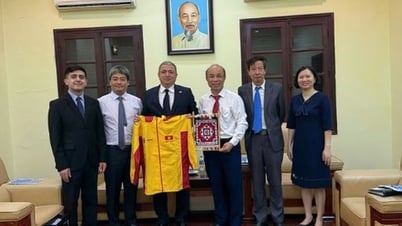
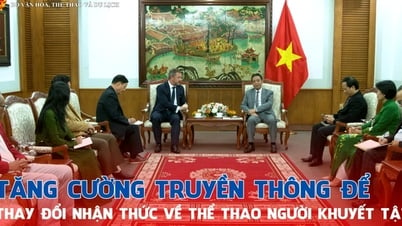
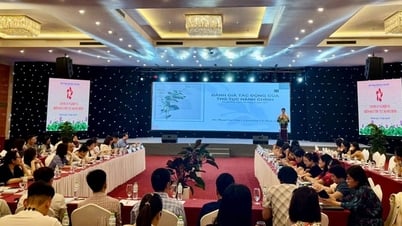
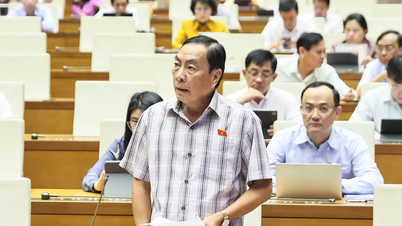


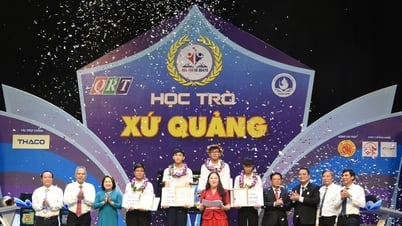




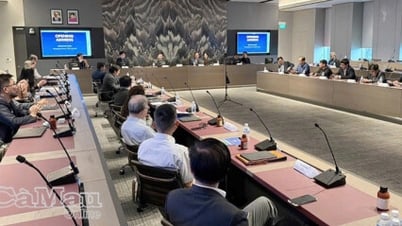











Comment (0)